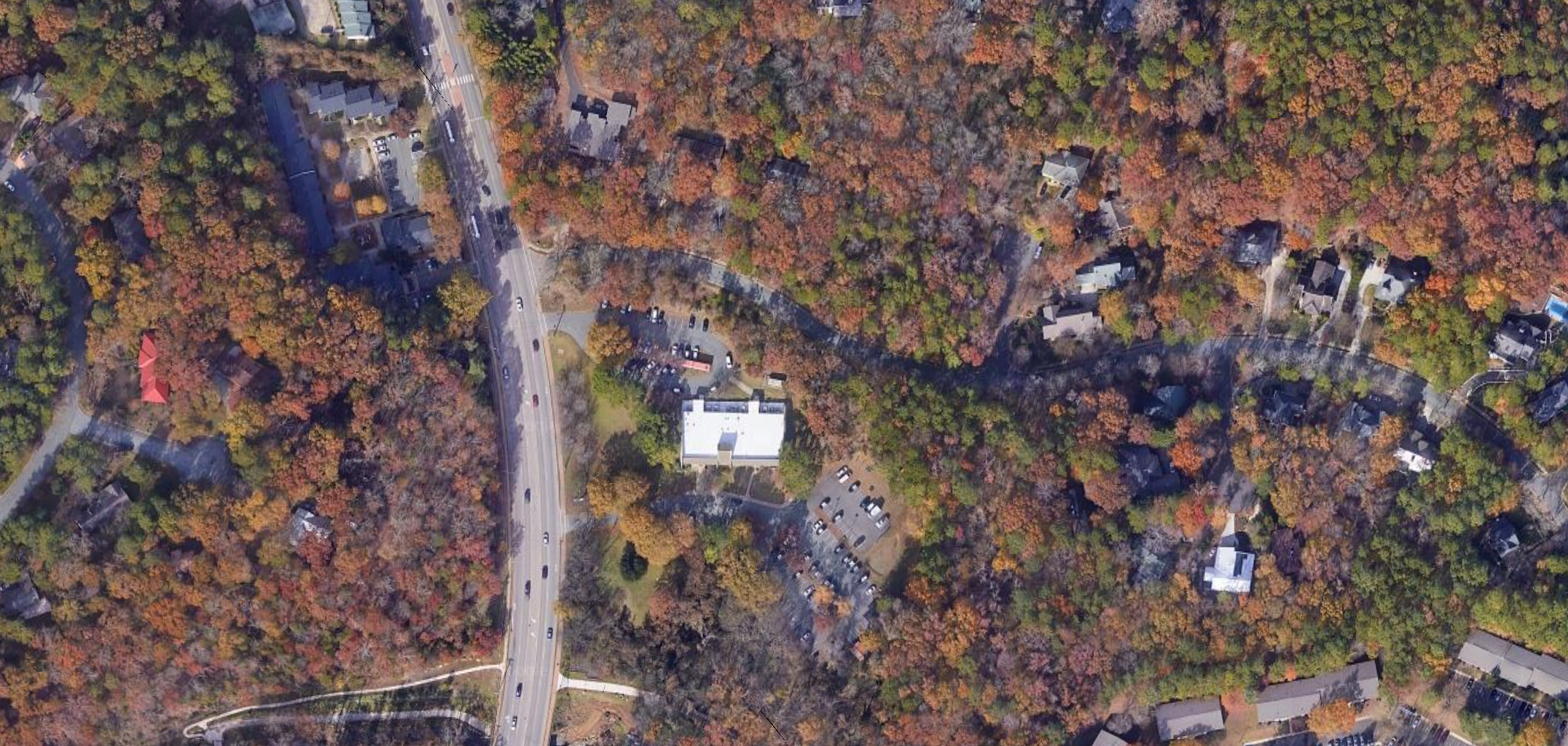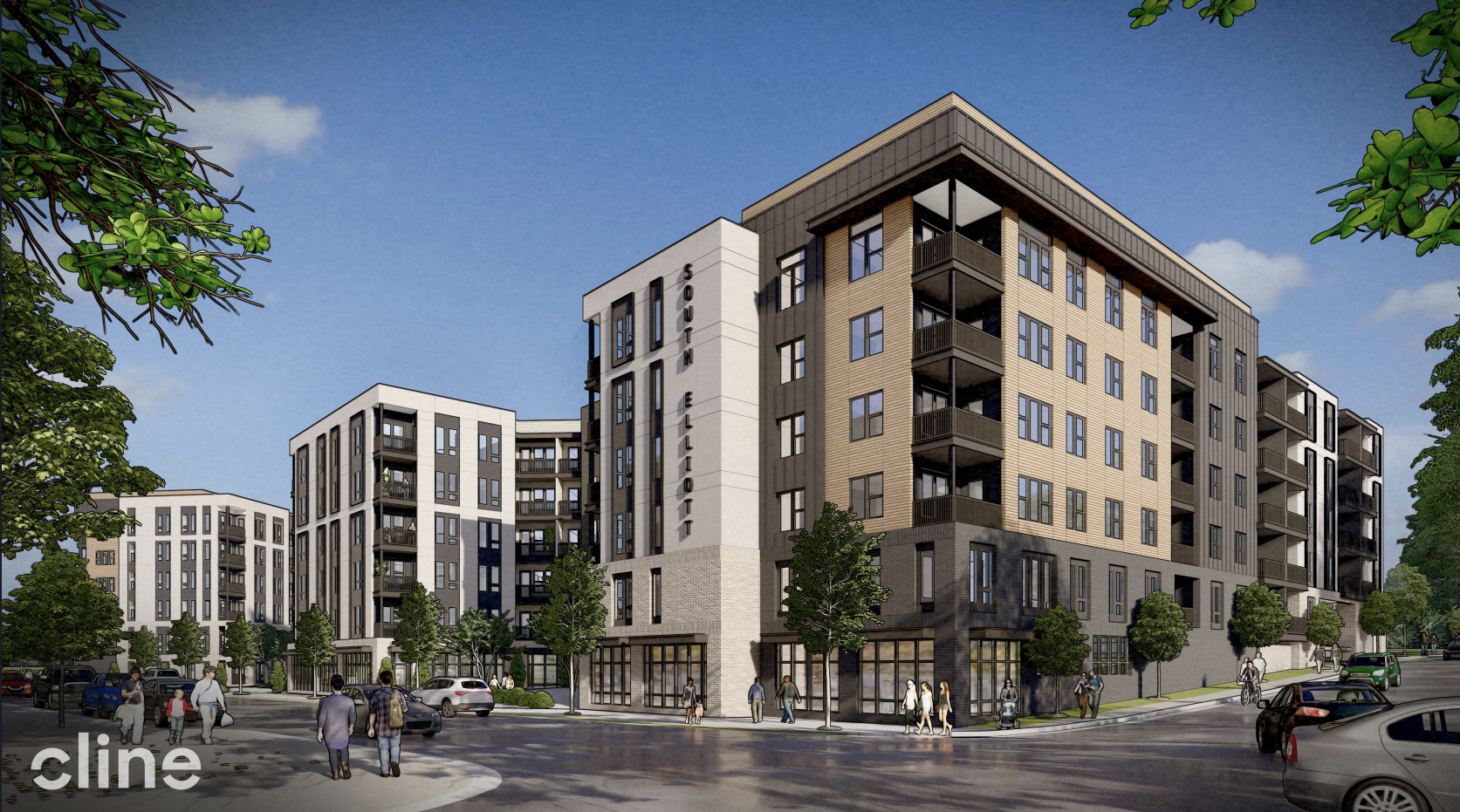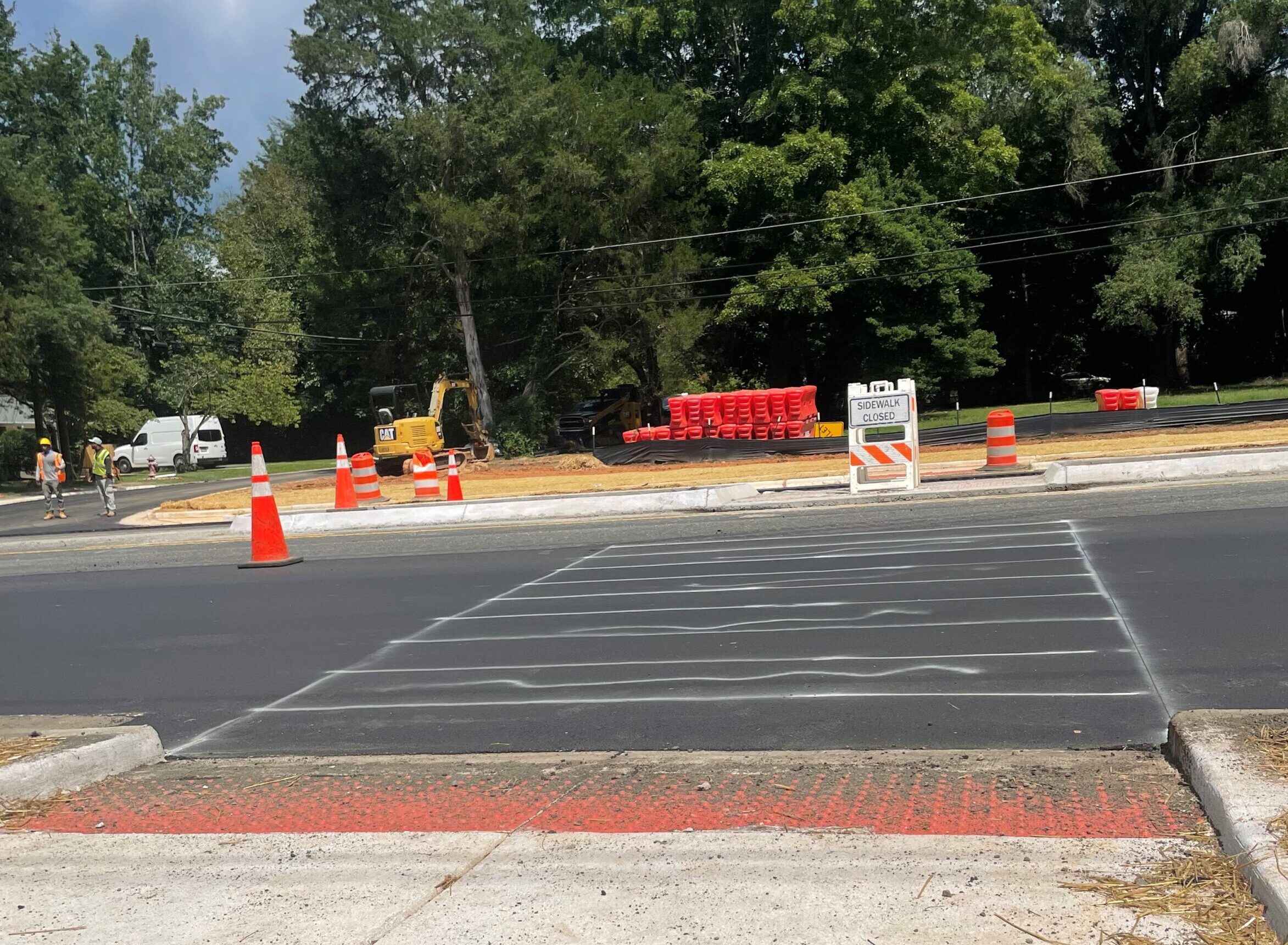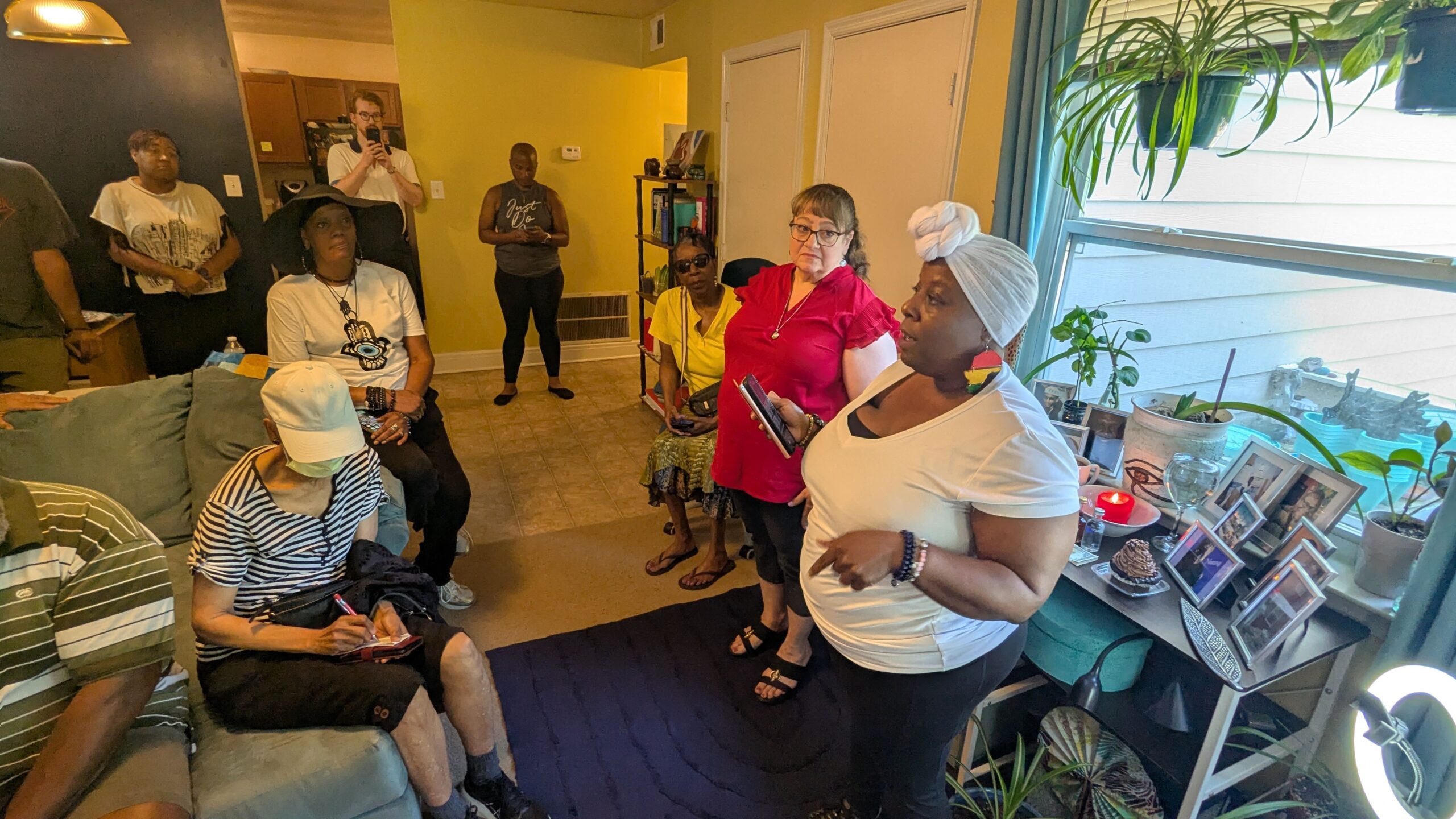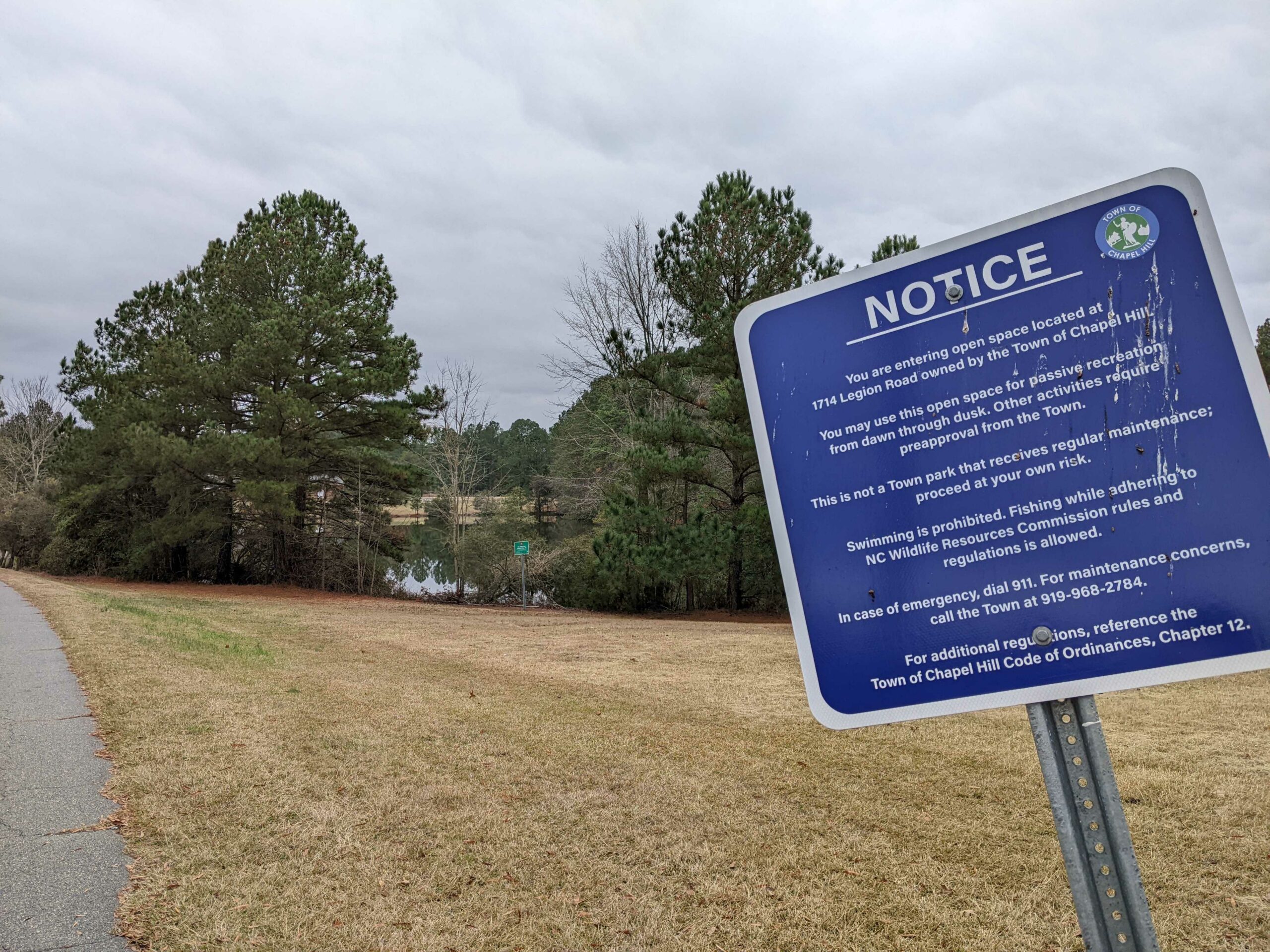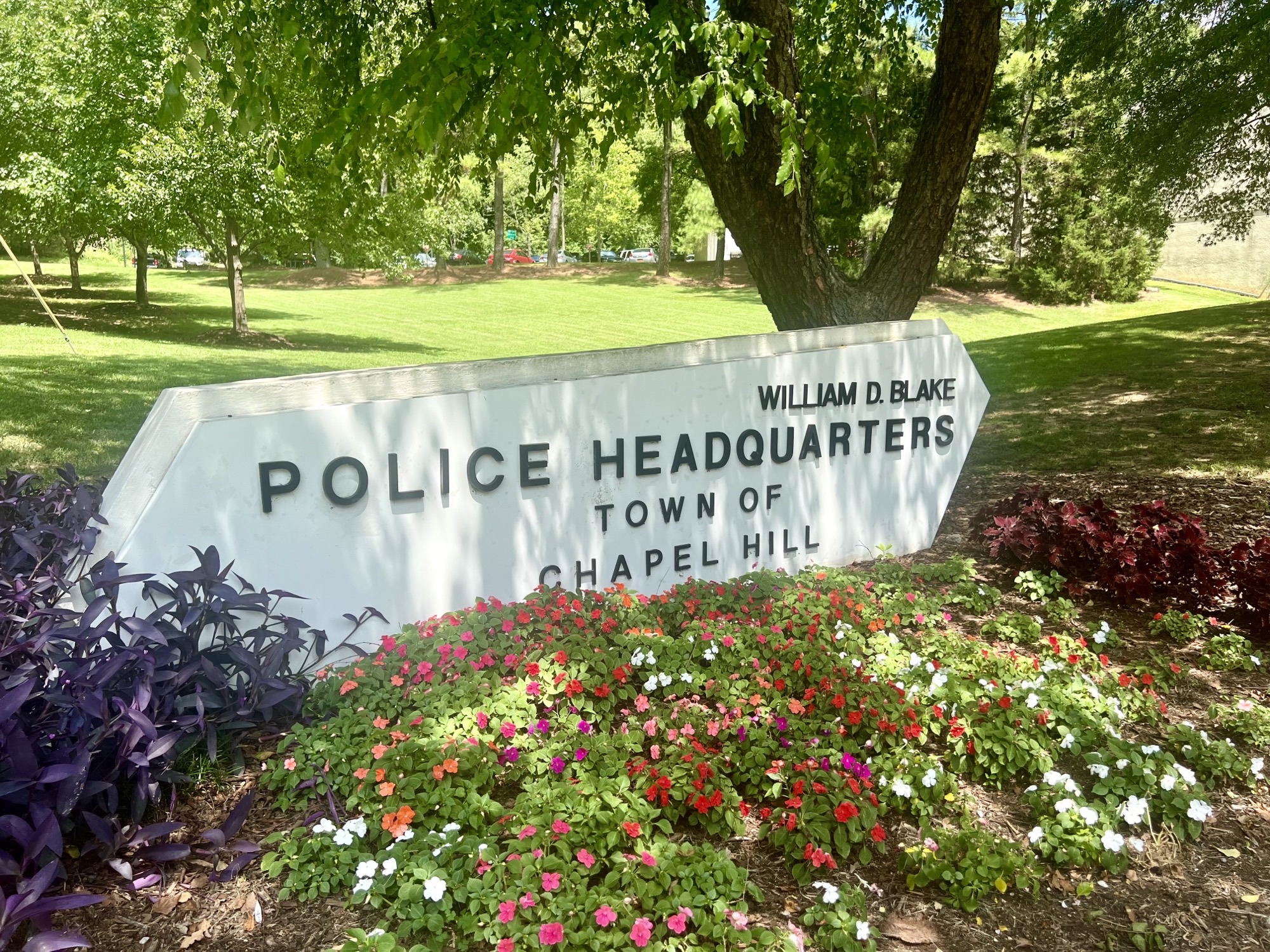After months of review through taking samples, conducting research and cooperating across governments about the levels of coal ash at 828 Martin Luther King Jr. Boulevard, the state Department of Environmental Quality released a draft Brownfields Redevelopment Section agreement with the Town of Chapel Hill describing development possibilities on the property.
Since the fall of 2022, the town has focused on the site predominantly being a future municipal services center to replace the current police department and include other town operations. Scaling back its possibilities from including residential development required reframing its ongoing discussions with the Department of Environmental Quality (NCDEQ) about applying through its Brownfields program, which is used to survey and outline uses for sites with environmental contamination. The site, which currently houses the Chapel Hill Police Department, has faced redevelopment hurdles because of the presence of coal ash and construction materials under the surface. But with the NCDEQ review, the public now knows an outline of what it will take for the department allow new construction there – and what kind of safety steps have to be taken first.
The draft Brownfield agreement, which was shared with the public on Monday and is open for public comment, states the site should only be used for a municipal service center, office or retail buildings, recreational space, transit uses, and associated parking for all those options. Besides residential purposes, the department said childcare centers, adult care centers, schools, community gardens, certain sports fields, and long-term outdoor spaces for animals are prohibited on the land.
According to the NCDEQ report, the hazardous materials came to the site because it was treated as a “borrow pit” during the 1950s and early 1960s, with site owner Richard Sparrow then filling it with construction and demolition debris during the mid-1960s to 1970s. While those materials can be attributed to some of the issues under the ground, NCDEQ said the coal ash — formally called “coal combustion products” — was used as structural fill with soil, and the “understanding” is that the material came from UNC’s power generation facilities in town. The Town of Chapel Hill purchased 828 Martin Luther King Jr. Boulevard site in 1980, building the existing police department building on it shortly after. When the town prepared to redevelop the site, though, the recognition of the coal ash and concern over its effects caused plans to grind to a halt.
The DEQ came to its current conclusion after a series of environmental assessments that measured different parts of the soil, groundwater, runoff, and vapor at the property. Some of the assessment was helped by the town’s history of short-term mitigation measures – like removing coal ash near the Bolin Creek Trail during its construction and efforts this spring to stabilize the slope going to the creek. Still, the DEQ used its measurements and data to run a risk calculator output for the types of proposed development to get an idea of the hazards the coal ash and construction waste could create. The program deemed higher cancer risks and hazard risks for most options if direct contact happened with the highest concentration of the coal ash – but the DEQ said all those risk exceedances would be “mitigated or eliminated” through the land use restrictions proposed in the draft agreement.
That conclusion was supported by a review of a metal toxicology expert from the U.S. Environmental Protection Agency, Frances Nilsen. In its decision memorandum, the DEQ said Nilsen checked the data and corroborated the material would “present less of a risk for non-residential uses,” while adding the town’s mitigation efforts have prevented the coal ash from having a noticeable ecological impact on the site. According to the state department, that means it will bypass an ecological risk assessment unless “an unforeseen change of conditions poses a threat to Bolin Creek” – something some Chapel Hill residents had requested before any development at the site.
Some of those concerned about the coal ash advocated for the town to remove all traces of the hazardous material before considering any change to the property. But according to the DEQ’s draft agreement, that would not be necessary to mitigate risks posed by the material. The report says capping the coal ash underground – with two feet of “demonstrably clean fill soil” between it and the surface – would limit exposure and radiation risks. Additionally, the town would be required to build “earth retention systems,” like retaining walls, to help prevent exposure along slopes and when weather causes erosion.
With this method, any kind of soil disruption that is not landscaping – which is also set to not exceed 18 inches into the ground – requires alerting NCDEQ and the department’s approval to proceed. The same process would be in place for any future construction or different uses of the land under the draft agreement.
The soil is not the only risk at the site, according to the EPA in its preliminary assessment: the groundwater also has been contaminated by the dumped materials. According to that report, the levels of arsenic found in the groundwater samples were much higher than desired. But the DEQ said its sampling found a much lower concentration, and the department clearly stated that it will prohibit any use of groundwater from 828 Martin Luther King Jr. Boulevard in its land use restrictions for the site.
What comes next for the property and project? The town will begin to draft and engineer potential designs for a cap of the coal ash, while Chapel Hill residents and community members will have 30 days from Monday to share written public comments with the state department. Additionally, the town government requested that NCDEQ hold a public meeting about the project, which the state requires to take place between 30 and 60 days following the public comment period. No date has formally been set yet, according to Chapel Hill.
The plan can be reviewed online here, or in-person at either the Chapel Hill Public Library or the Brownfields Redevelopment Section offices in Raleigh. If going to the Chapel Hill Library, the town asks for people to contact Sarah Wagner (919-969-2022 ext. 2022) and if going to the Brownfields offices, contact Shirley Liggins (919-707-8383).
More information about the history of Chapel Hill’s redevelopment plans and coal ash mitigation at the 828 Martin Luther King Jr. Boulevard property can be found on the town’s website.
Chapelboro.com does not charge subscription fees, and you can directly support our efforts in local journalism here. Want more of what you see on Chapelboro? Let us bring free local news and community information to you by signing up for our newsletter.


